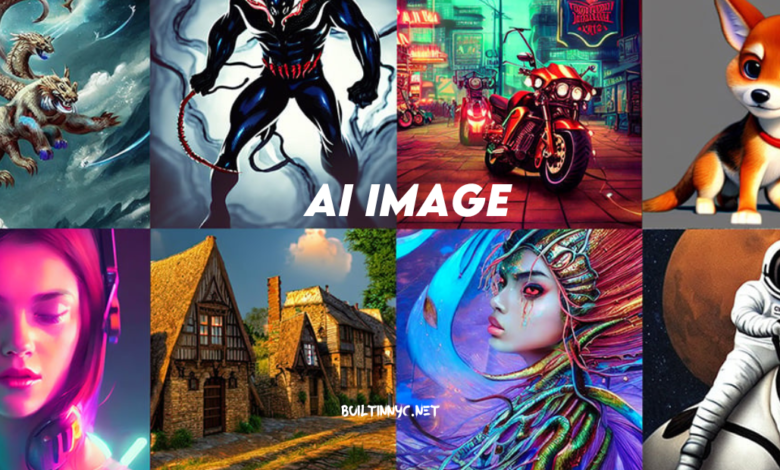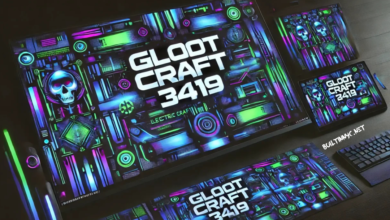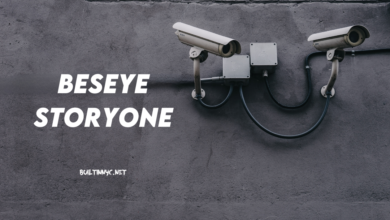AI Image generator from Text: Transforming Creativity with Artificial Intelligence

Artificial intelligence (AI) has made remarkable strides in recent years, pushing the boundaries of what technology can accomplish in the creative industries. One of the most exciting developments in AI is its ability to generate images from text. AI Image generator from Text use sophisticated algorithms to turn written descriptions into detailed and often astonishingly accurate images, opening up new possibilities for artists, designers, and creators of all kinds. But how does this technology work, and what implications does it have for the future of art, design, and visual media?
How Does AI Image Generation Work?
AI image generation from text relies on a subset of machine learning known as natural language processing (NLP) and generative adversarial networks (GANs) or diffusion models. Let’s break down these key components:
1. Natural Language Processing (NLP)
NLP is the field of AI that enables machines to understand, interpret, and generate human language. In the context of AI image generators, NLP allows the system to comprehend and process textual descriptions provided by users. When a user submits a text prompt—whether it’s “a sunset over the ocean” or “a futuristic cityscape at night”—the AI interprets the meaning, context, and details embedded in that description.
2. Generative Models
Once the text is processed, the AI uses generative models to create images. The two most common types are:
- Generative Adversarial Networks (GANs): GANs consist of two neural networks—the generator and the discriminator—that work in opposition to each other. The generator creates images based on the text input, while the discriminator evaluates whether the image looks realistic or not. Over time, these two networks “compete” and refine each other’s work, ultimately producing highly detailed and realistic images.
- Diffusion Models: Diffusion models, like DALL-E 2, function by gradually “deconstructing” an image into noise and then reconstructing it step-by-step to match the text input. This process allows for fine-grained control over the final output and can produce photorealistic and imaginative images.
Applications of AI Image Generation
AI-powered image generators have opened up an array of exciting applications across different industries:
1. Art and Creative Expression
AI image generation is a tool for artists looking to explore new creative avenues. By simply providing text prompts, artists can generate concept art, illustrations, or even entire scenes that might have been challenging or time-consuming to create manually. The AI becomes an extended tool for the creative process, offering fresh perspectives and visuals that inspire human creators.
2. Design and Advertising
In design and advertising, AI-generated images are transforming the way companies create visuals for campaigns. Graphic designers can use AI to produce mock-ups, product prototypes, and visuals that align with specific themes or messages. In advertising, AI-generated visuals can quickly generate eye-catching images tailored to particular demographics or market trends.
3. Entertainment and Media
AI image generation is also making waves in the entertainment and media industries. From video games to movies and television, AI can generate concept art, character designs, and scene settings that bring the imagined worlds of writers and directors to life. The ability to visualize a script or a novel before production helps streamline creative processes and reduces costs.
4. Education and Training
In the realm of education, AI-generated images can be used for interactive learning materials, providing students with vivid visuals of historical events, scientific concepts, or geographical landscapes. Educational tools can also be personalized to adapt to the unique needs of individual students, offering customized imagery that aids comprehension and engagement.
5. Personalization
AI image generators are also revolutionizing the way we personalize content. For example, a user could ask an AI to generate images of a place they’ve never been or combine different objects into a single image—creating a custom visualization of their imagination or experiences. Social media and e-commerce platforms are increasingly leveraging AI to offer personalized visual content, improving user engagement and satisfaction.

Challenges and Considerations
While AI image generators offer incredible possibilities, several challenges and ethical considerations must be addressed:
1. Quality and Accuracy
Despite their impressive capabilities, AI-generated images are not always flawless. Some images may exhibit visual artifacts or inaccuracies, especially when the text input is ambiguous or overly complex. Refining these algorithms to consistently generate high-quality images is an ongoing challenge.
2. Ethics and Ownership
The ability of AI to generate highly realistic images raises questions about authorship and copyright. Who owns the rights to an image created by an AI? Is it the user who provided the prompt, the company behind the AI tool, or the AI itself? These questions have sparked debates about intellectual property laws and how they should evolve to account for AI-driven creativity.
3. Misuse of Technology
AI-generated images can be misused in various ways. Deepfakes, which manipulate images or videos to portray false or misleading information, have become a significant concern. AI tools could potentially be used to create fake news, disinformation, or harmful content. Ensuring that AI image generators are used responsibly will require oversight and regulation.
4. Impact on Traditional Art Forms
As AI continues to gain prominence in creative industries, some argue that this technology could overshadow traditional art forms. However, many artists see AI as a tool that can coexist with traditional methods, allowing for a fusion of the digital and physical worlds. It’s important to view AI not as a replacement for human creativity but as an enhancement to it.
The Future of AI Image Generation
The future of AI image generation is incredibly exciting. As technology continues to improve, we can expect even more impressive results, with AI becoming better at understanding complex descriptions and generating increasingly sophisticated images. With the rise of multimodal AI systems that integrate text, image, and even audio, we could see a future where users can generate not only images but fully interactive visual experiences, including animations and virtual environments.
Furthermore, AI’s potential for real-time image generation could revolutionize industries like virtual reality (VR) and augmented reality (AR), enabling more dynamic and personalized experiences.
Conclusion
AI image generation from text represents a significant leap in the way we think about creativity and technology. With its potential to enhance art, design, entertainment, and education, AI is enabling new forms of expression and providing unprecedented access to visual content creation. As the technology continues to evolve, we can expect to see even more incredible advancements, but it will be crucial to address the challenges it presents, particularly concerning ethics and usage. Ultimately, AI image generators are not just tools; they are partners in the creative process, opening up limitless possibilities for those who dare to imagine.



